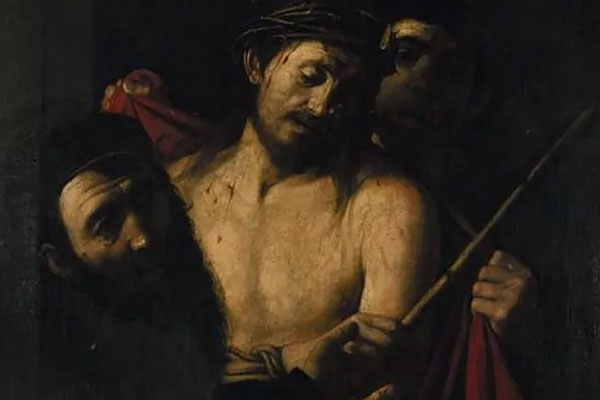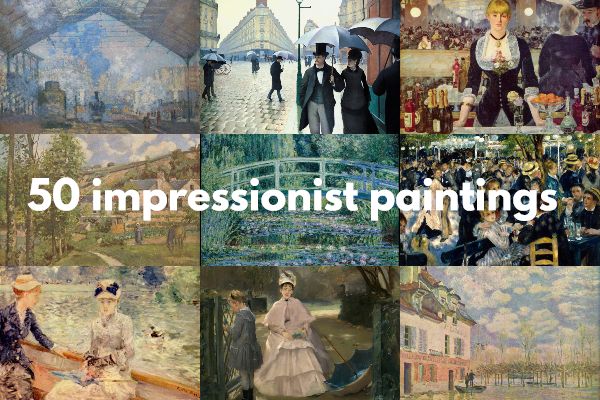25 Post-Impressionist paintings
by G. Fernández – theartwolf.com
After the zenith of Impressionism in the 1870s and early 1880s, many of the major artists who had embraced this movement felt that it was time to move on, looking for new paths. Thus emerged a heterodox movement, by no means uniform, known today as Post-Impressionism. Led by Paul Cézanne, Vincent van Gogh and Paul Gauguin, Post-Impressionism, along with its predecessor, laid the foundations of modern art.
Post-Impressionist Art as seen through 25 works of art
Without the intention of being an in-depth study of Post-Impressionism, but rather a tribute to it, and an invitation to discover more about the artists who developed it, we present here 25 masterpieces of this fascinating artistic period.
The paintings are shown in alphabetical order following the name of their author.
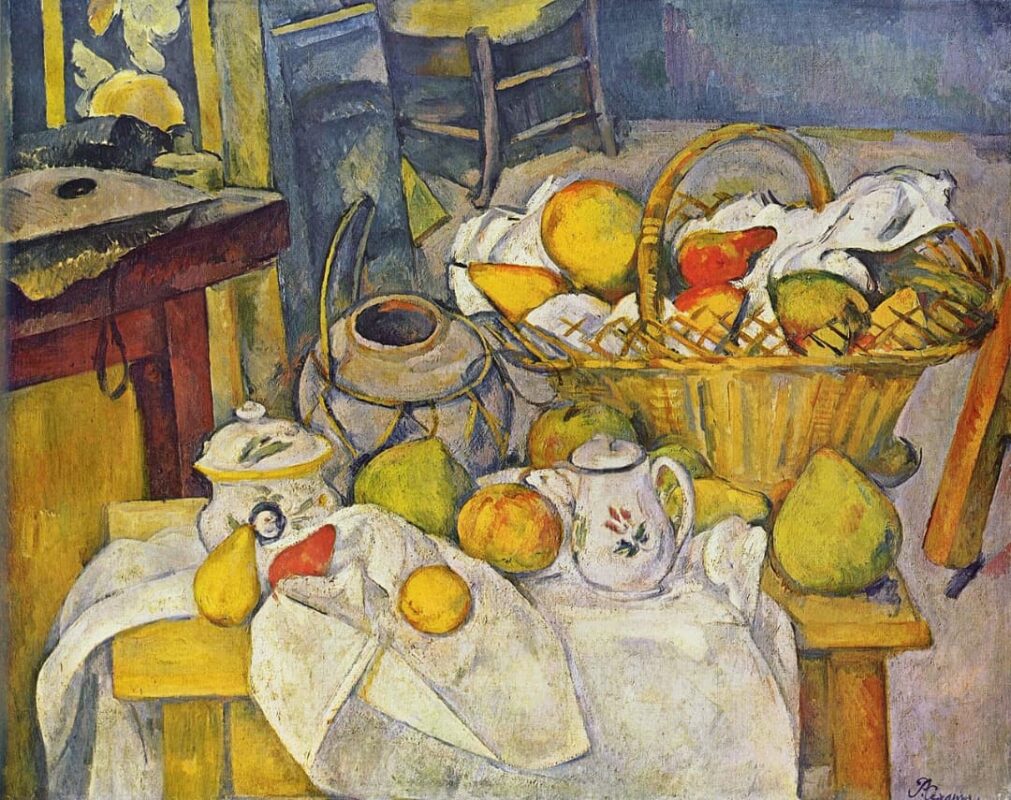
PAUL CÉZANNE: “La Table de cuisine” also known as “Nature morte au panier“, 1880-1890 – Paris, Musée d’Orsay
Cézanne is perhaps the greatest master of the still life of any era, and this brilliant painting is one of his most ambitious compositions. This group of figures could by themselves constitute an exceptional still life, but Cézanne has reserved for us an extraordinary illusion in the form of a basket of fruit. Where is this basket? Placed in a very unstable position in the upper right corner of the table, or -thanks to a complex perspective- is on the ground along with the wood piece partially depicted at the right of the painting?
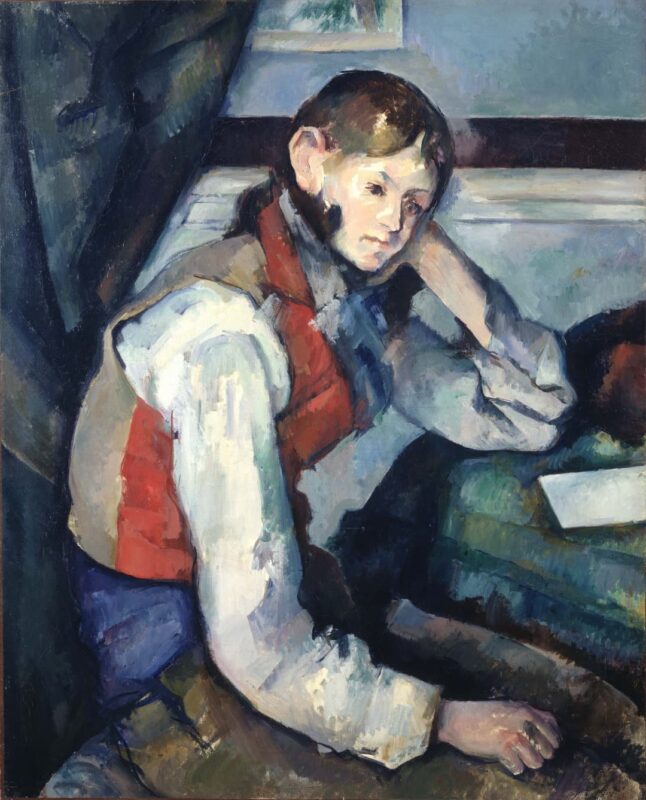
PAUL CÉZANNE: “The Boy in the Red Vest (Le Garçon au gilet rouge)”, 1889-90
Although Cézanne is most famous among the general public for his still lifes, his portraits (and self-portraits) are of equal or greater interest. This painting from the E. G. Bührle Foundation is the best of four versions of the same subject painted by the artist, and the only one preserved outside the United States.
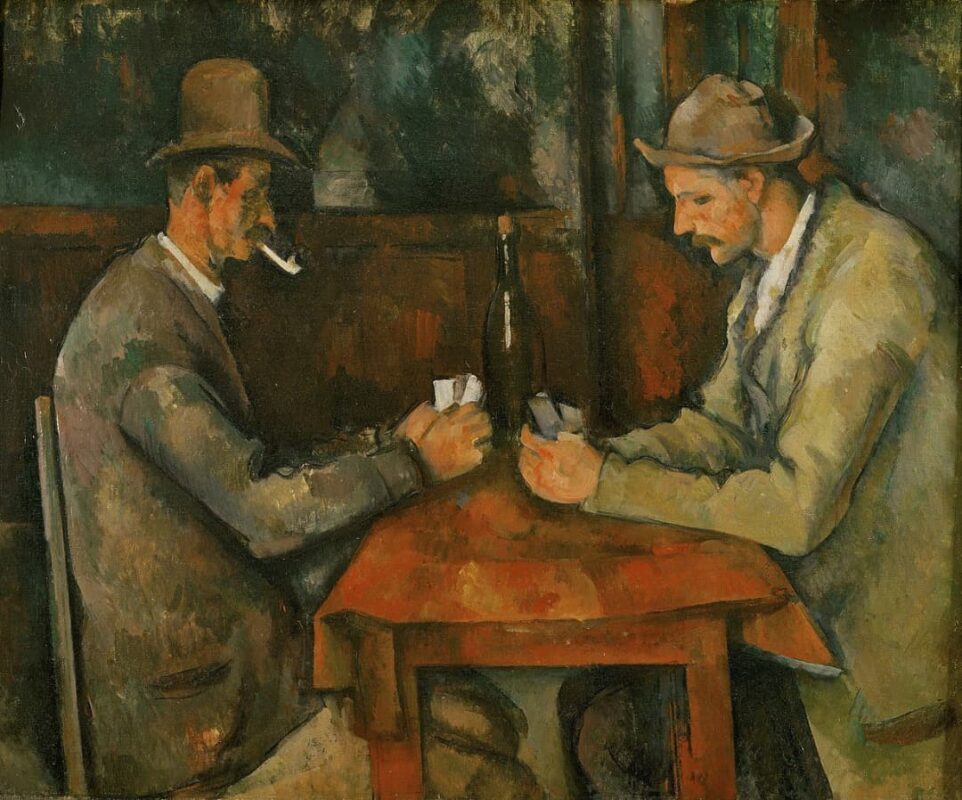
PAUL CÉZANNE: “The Card Players”, 1893-96
This is the smallest of Cézanne’s three versions of a pair of card players, but it is quite likely that it was also the last of them, and the most elaborate. While the composition is really simple (two players facing each other, with a black bottle disguisingly dividing the canvas into two parts) the fabulous intensity of the players’ faces make this painting one of the masterpieces of post-Impressionist painting.
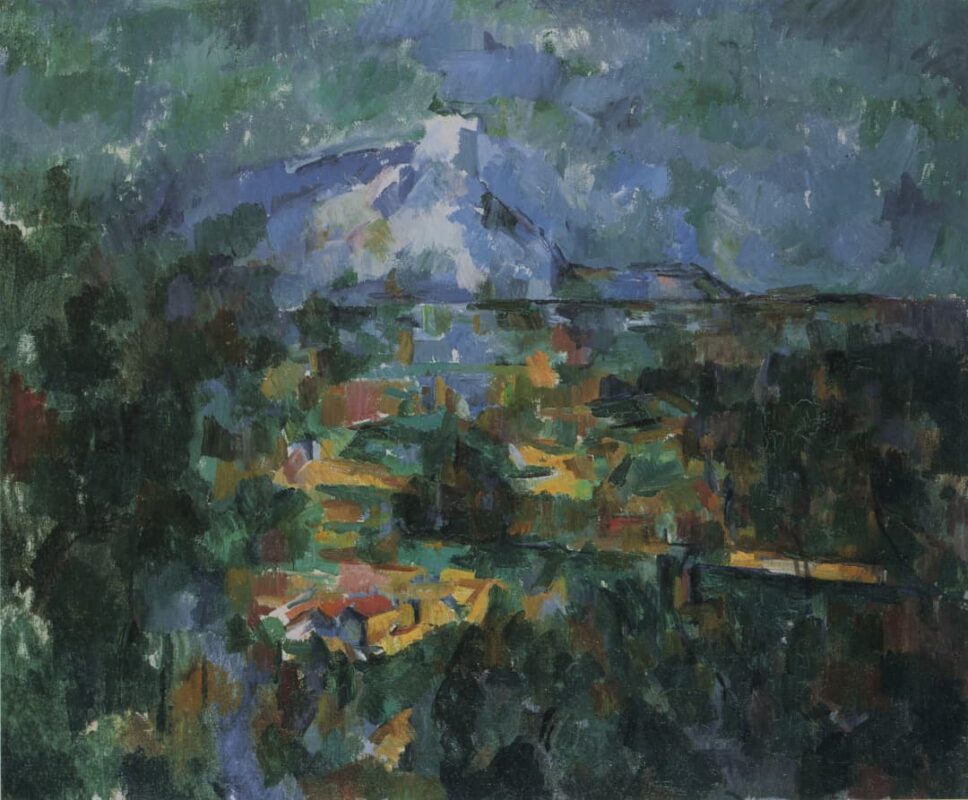
PAUL CÉZANNE: “Mont Sainte-Victoire Seen from Les Lauves”, 1904-06
This is one of the most developed versions of the numerous views that Cézanne painted of the Sainte-Victoire Mountain. It is a work that we could call cubist before cubism: the triangular mountain and the elements of the meadow -both natural and man-made- acquire volume not due to perspective, but due to the superimposition of chromatic planes. Cézanne introduced vegetal elements in the foreground, delimiting and emphasizing the view of the mountain and the meadow.
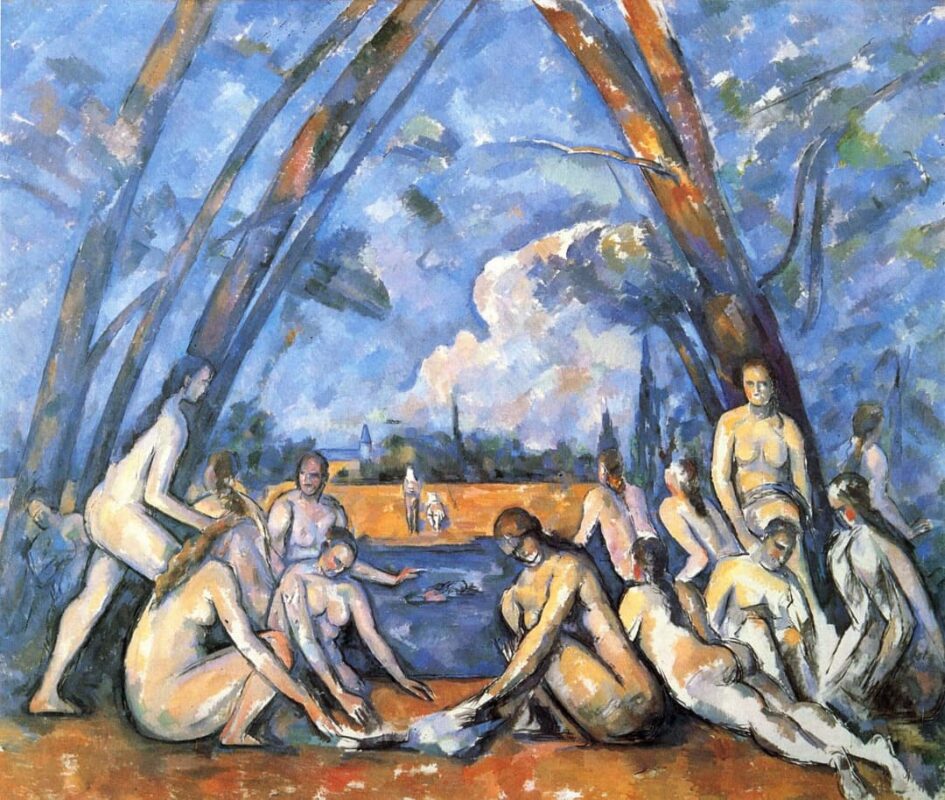
PAUL CÉZANNE: “Les Grandes Baigneuses”, 1906
This is the largest canvas painted by Cézanne, and a fabulous culmination of the “Bathers” series. The painting is indebted to some of Titian’s best works, such as “Bacchanal”, while the almost sculptural representation of the human body links this painting to Michelangelo’s frescoes in the Vatican. Two other “complete” versions of the “bathers” exist, one in the Museum of Modern Art in New York, and the other in the National Gallery in London.
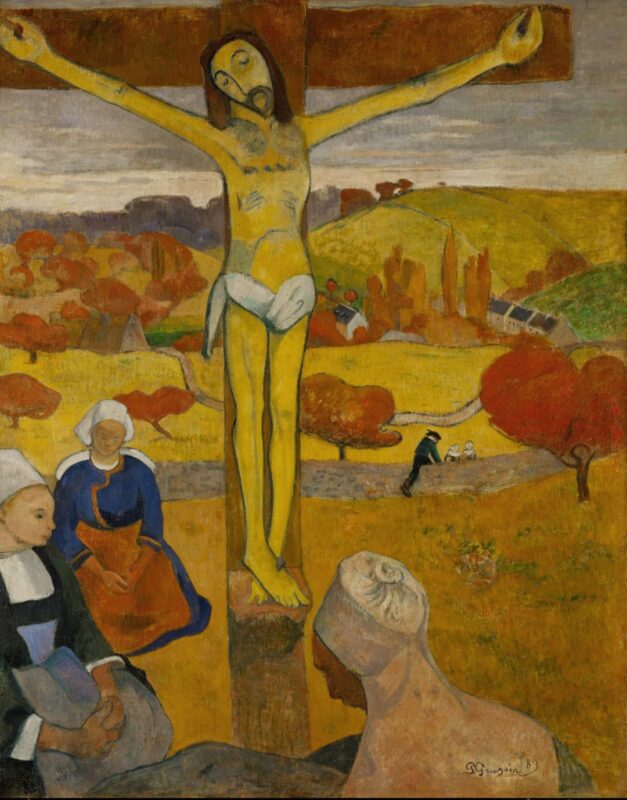
PAUL GAUGUIN – “Le Christ jaune (The yellow Christ”), 1889
This work can be considered one of the origins of symbolist painting, along with “The Green Christ”, and is a clear precedent to the religious paintings Gauguin created in Polynesia (“Ia Orana Maria”, “Maternity”), but using Breton women instead of Polynesian girls as models. The figure of the yellow Christ also appears in a famous self-portrait of the artist now in the Musée d’Orsay in Paris.
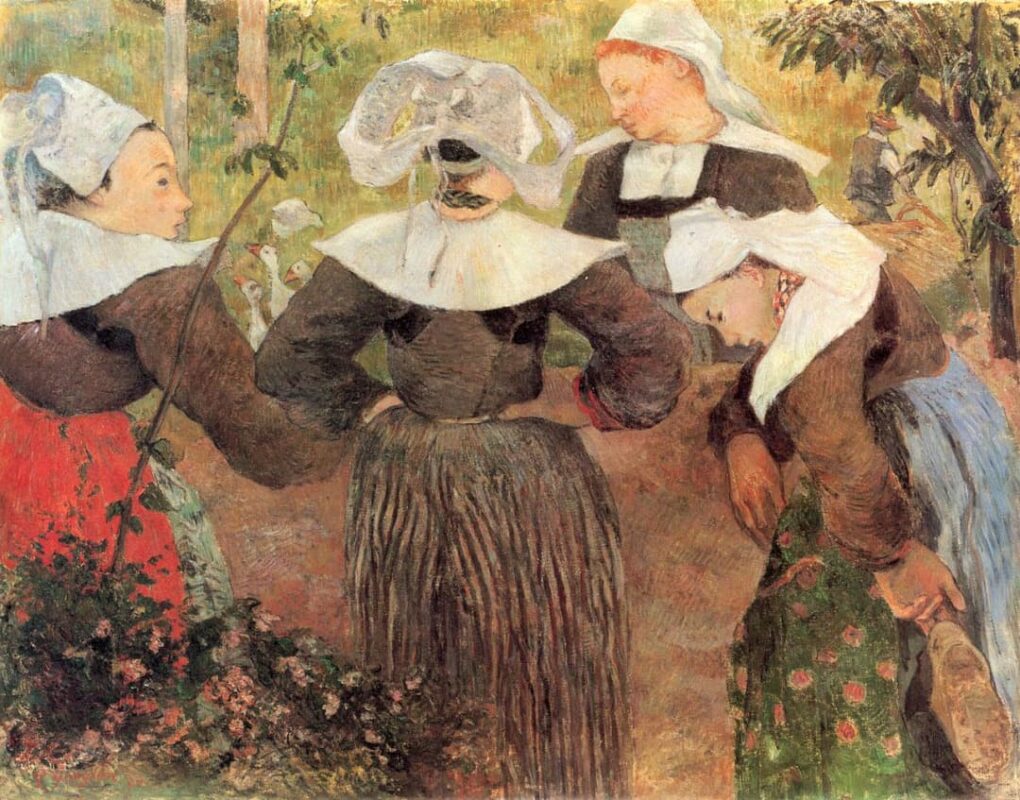
PAUL GAUGUIN – “Cuatro bretonas”, 1891
“Four Bretonnes causant” (“Bretonnes causant”, sometimes called “La Danse des quatre Bretonnes”), is perhaps the most famous of all the paintings of Breton peasant women painted by Gauguin. Clearly far removed from Impressionism, these works are often considered the clearest forerunner of Symbolist painting.
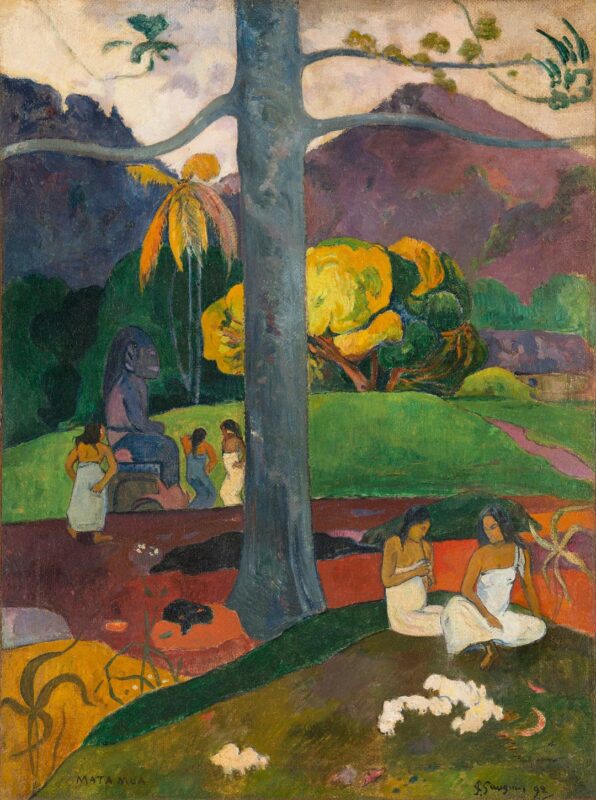
PAUL GAUGUIN – “Mata Mua (in the beginning)”, 1892
Gauguin traveled to the tropics seeking his artistic redemption, a search for the “primitive” and “exotic” to purify his art. “Mata Mua (in remote times)” is a fascinating composition divided by a gigantic tree rising majestically over a purple river. The two women on the right represent Tahiti’s present, while the group of women worshipping the huge idol statue are a representation of the past, the primitive life of Tahiti.
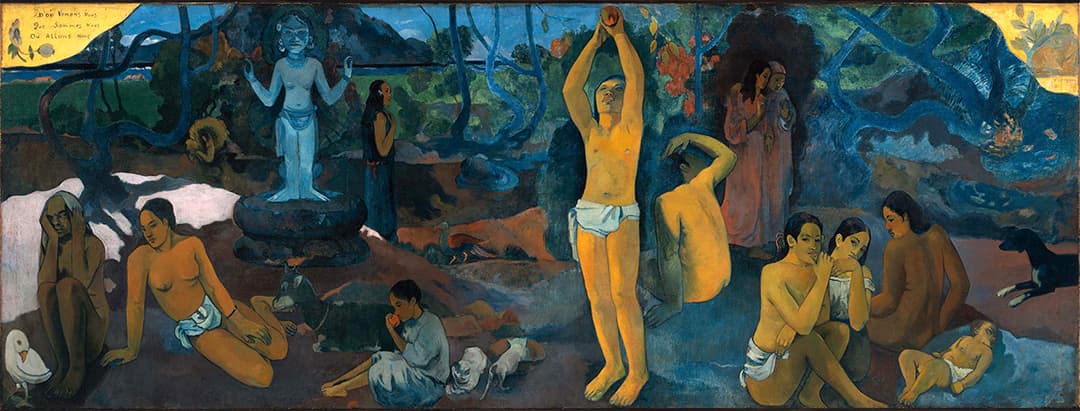
PAUL GAUGUIN – “Where Do We Come From? What Are We? Where Are We Going”, 1897
This painting is not only the most colossal work that Gauguin painted in his lifetime (139 x 375 cm.) but it’s also the work that explains the entire philosophical and pictorial doctrine of the artist. Structuring the canvas in an inverted chronological order, Gauguin seems to point the primitive, the innocent, as the only one way for the artist.
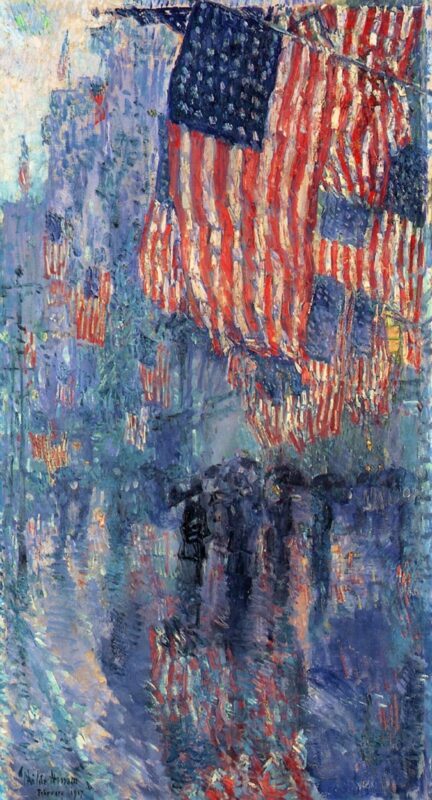
CHILDE HASSAM: “The Avenue in the rain” – 1917
Childe Hassam (1859-1935) was a key figure in American Post-Impressionism, although his only direct contact with the French Impressionists occurred when he took over Pierre Auguste Renoir’s studio and found a series of sketches by the French artist. His most famous works are those from the “flags” series (reminiscent of similar series by Monet), and “The Avenue in the rain” is the most “impressionistic” of them all.
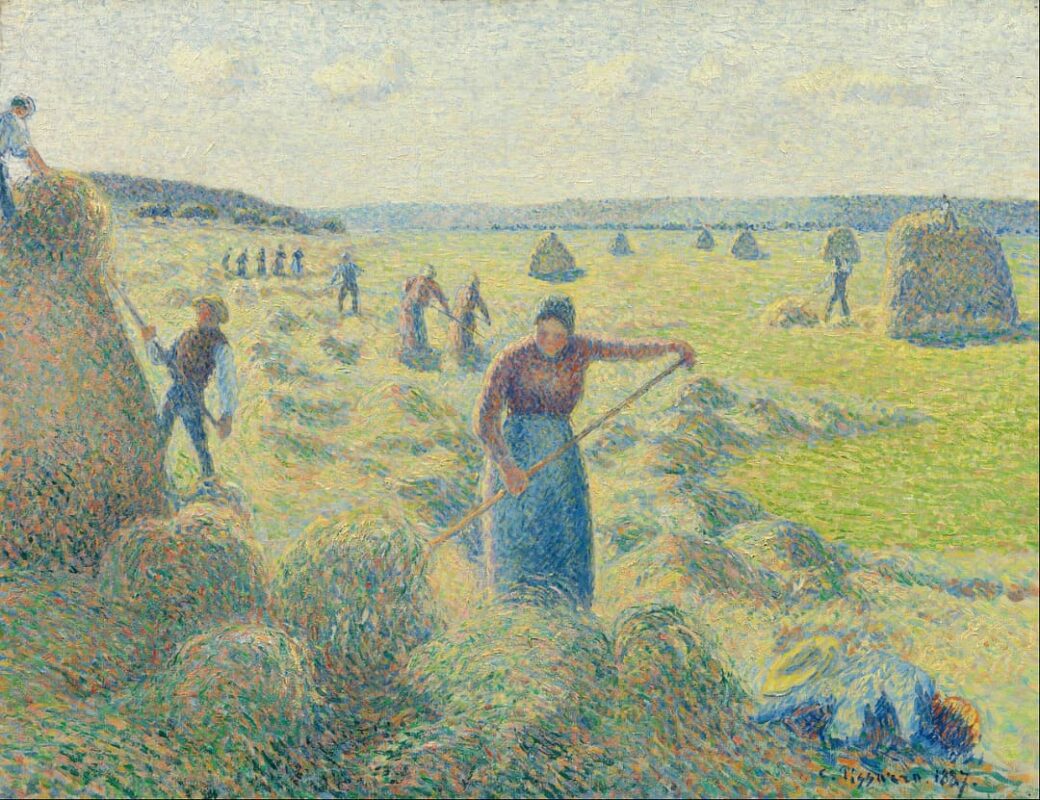
CAMILLE PISSARRO: “La Récolte des Foins, Éragny” – 1887
Albeit Pissarro is rightly considered one of the purest representatives of Impressionism, this does not mean that he did not have periods of experimentation that took his art beyond that movement. “La Récolte des Foins, Éragny” is a paradigmatic example of his “neo-expressionist” period, inspired by the pointillism of Seurat and Signac.
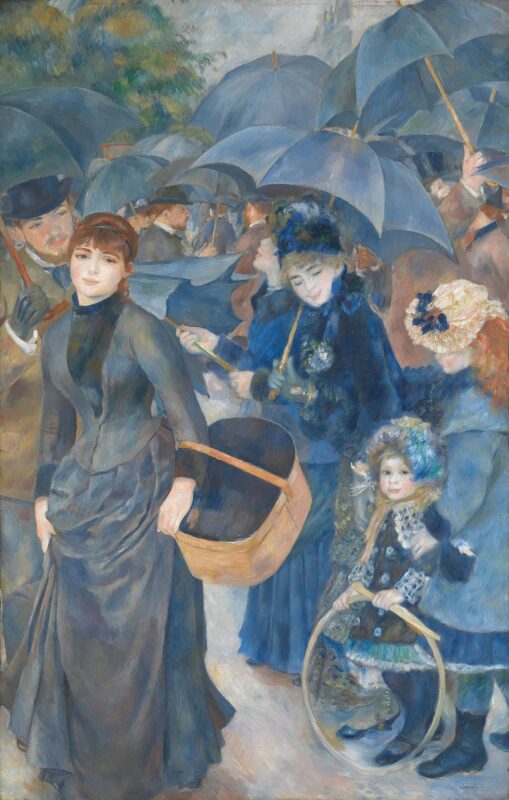
PIERRE-AUGUSTE RENOIR: “The umbrellas”, 1881-86
“Around 1883 there was a kind of break in my work; I had gone to the limits of Impressionism and I had reached the conclusion that I could neither paint nor draw. In a word, I was at a dead end.” “The Umbrellas” is a complex work in which we can find its author in two different stages of his artistic production. While several of the figures on the right are still markedly impressionistic, the precise drawing of other figures belong to a later period -heavily influenced by Ingres- begun in 1883.
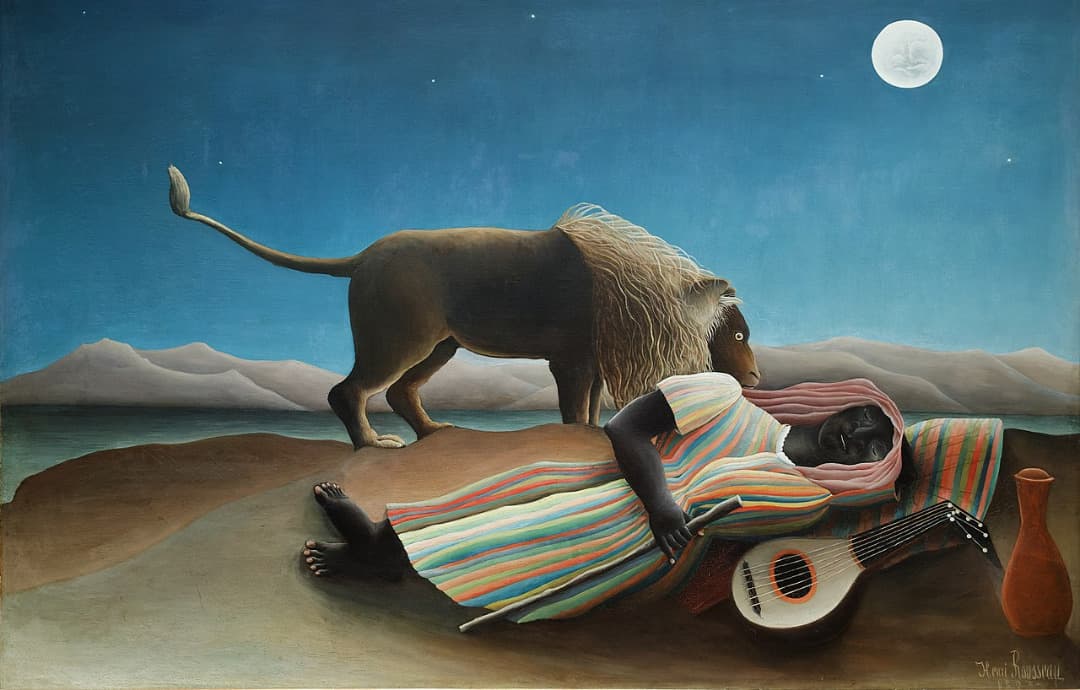
HENRI ROUSSEAU: “La Bohémienne endormie (The Sleeping Gypsy)”, 1897
Naïf, primitivist, wild… Multiple adjectives have been used to describe an unclassifiable artist, perhaps the most personal and uninhibited of all the artists who emerged immediately after the decline of Impressionism. “The Sleeping Gypsy” was exhibited at the XIII Salon des Indépendants, where -in line with the rejection suffered by other post-impressionist artists- it did not find a buyer.
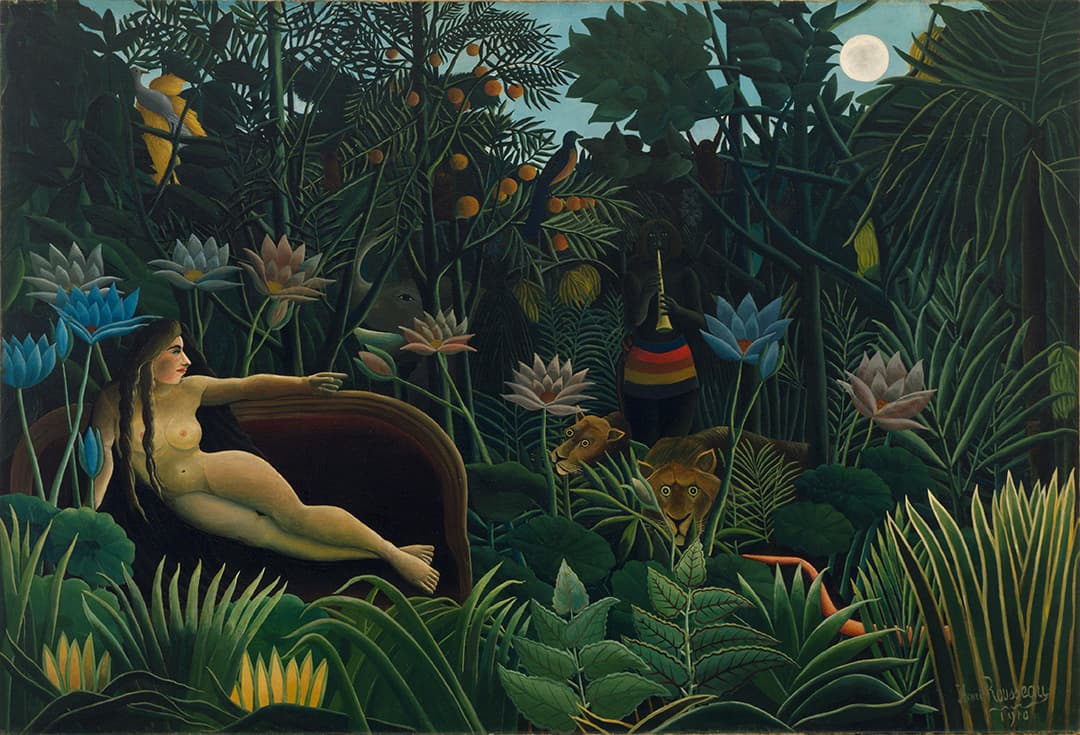
HENRI ROUSSEAU: “El Sueño”, 1910
Atemporal and incredibly suggestive, “The Dream” is a sensational painting that reunites in itself all the magic and fantasy of the art by ‘Le Douanier’ Henri Rousseau, perhaps the most personal and uninhibited of all the artists who emerged immediately after the decline of Impressionism, and who described the work with this mysterious speech: “The sleeping woman on the sofa dreams that she is transported into the forest, while hearing the music of a snake charmer…”
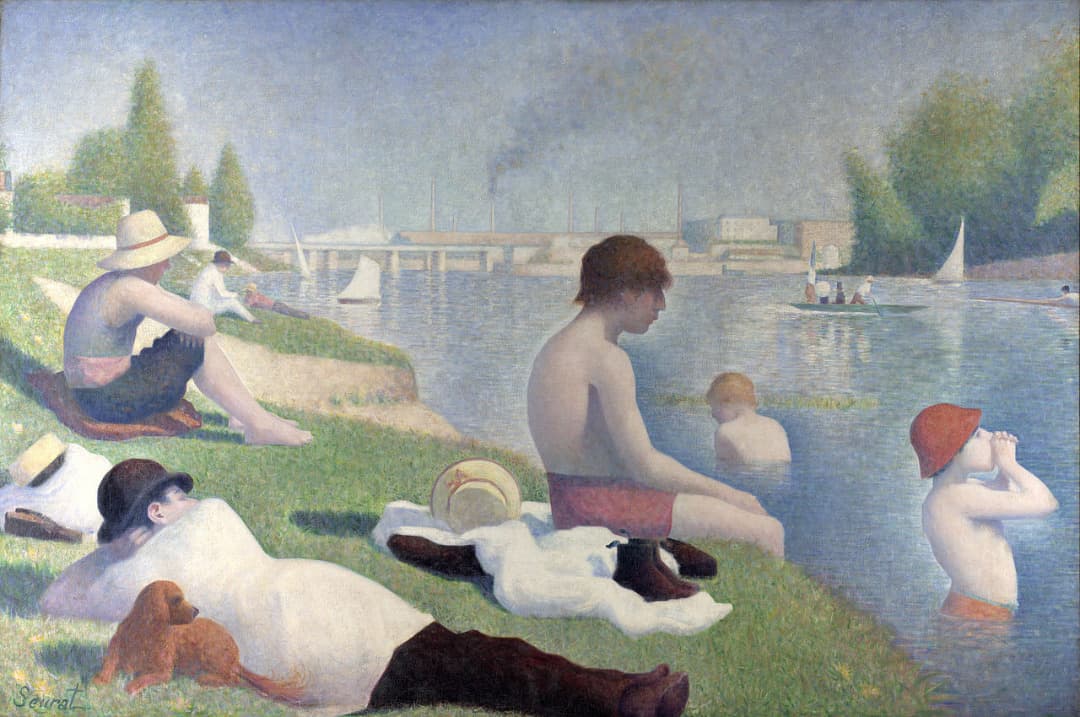
GEORGES SEURAT: “Une baignade à Asnières (Bathers at Asnières)”, 1883/84
Georges Seurat is one of the most important post-impressionist painters, widely considered the creator of “pointillism”, a style of painting in which small dots of primary colors create the impression of masses of secondary and intermediate colors. “Bathers of Asnieres” was the first of Seurat’s large-scale canvases.
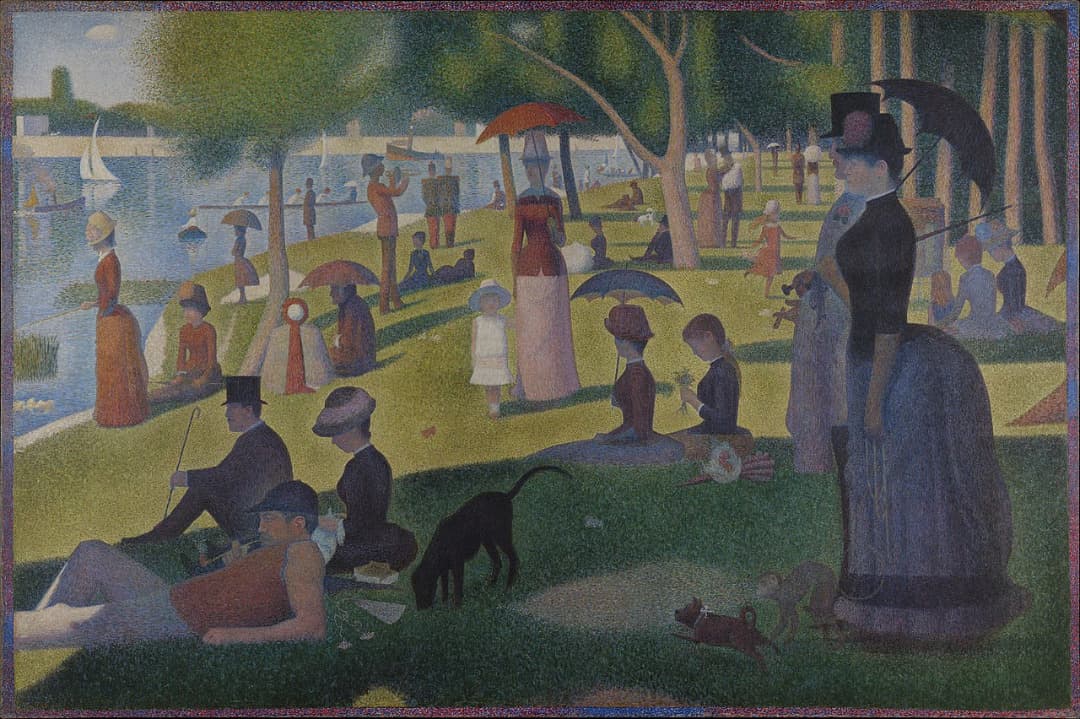
GEORGES SEURAT: “A Sunday Afternoon on the Island of La Grande Jatte”, 1884-86
“A Sunday Afternoon on the Island of La Grande Jatte” is Seurat’s masterpiece (the artist spent more than two years painting this canvas, creating more than fifty sketches and preparatory drawings), the best example of pointillist art, and an icon of post-impressionist painting.
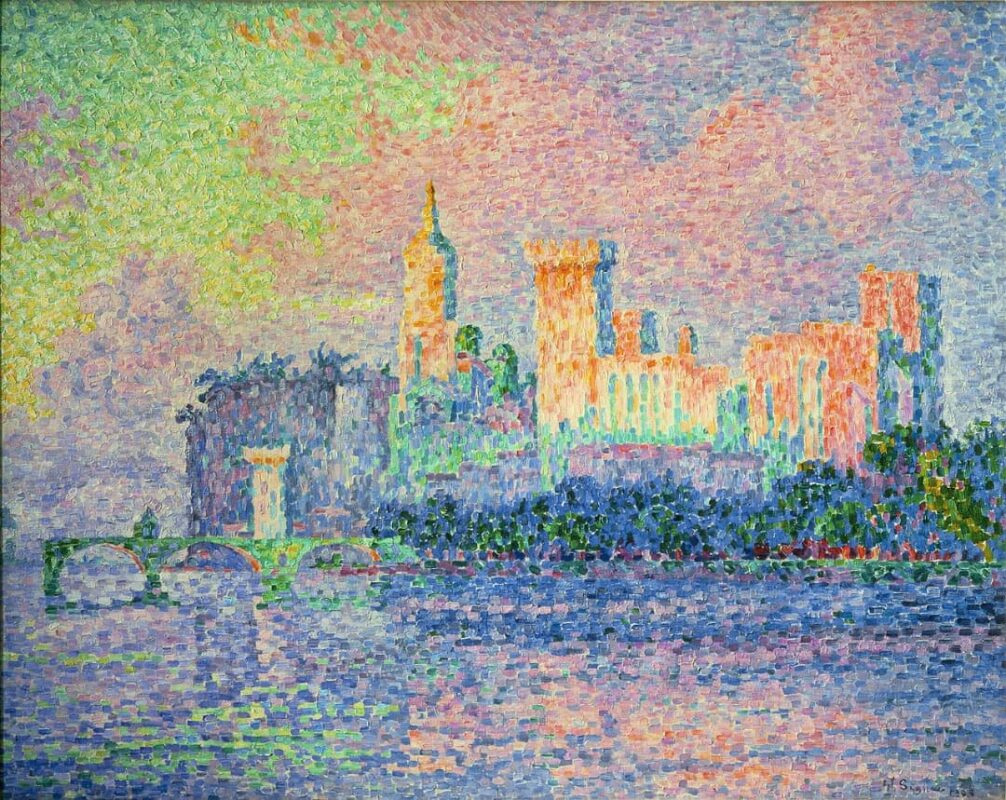
PAUL SIGNAC: “Le Palais des Papes, Avignon (The Papal Palace, Avignon)”, c.1900
Along with his master Georges Seurat, Paul Signac (1863-1925) is the key figure of Pointillism. Signac loved to sail, and traveled all over the French coast, especially along the Mediterranean, where he created some of his most brilliant compositions, like the example shown here. Signac was an important influence on later artists, such as Henri Matisse.
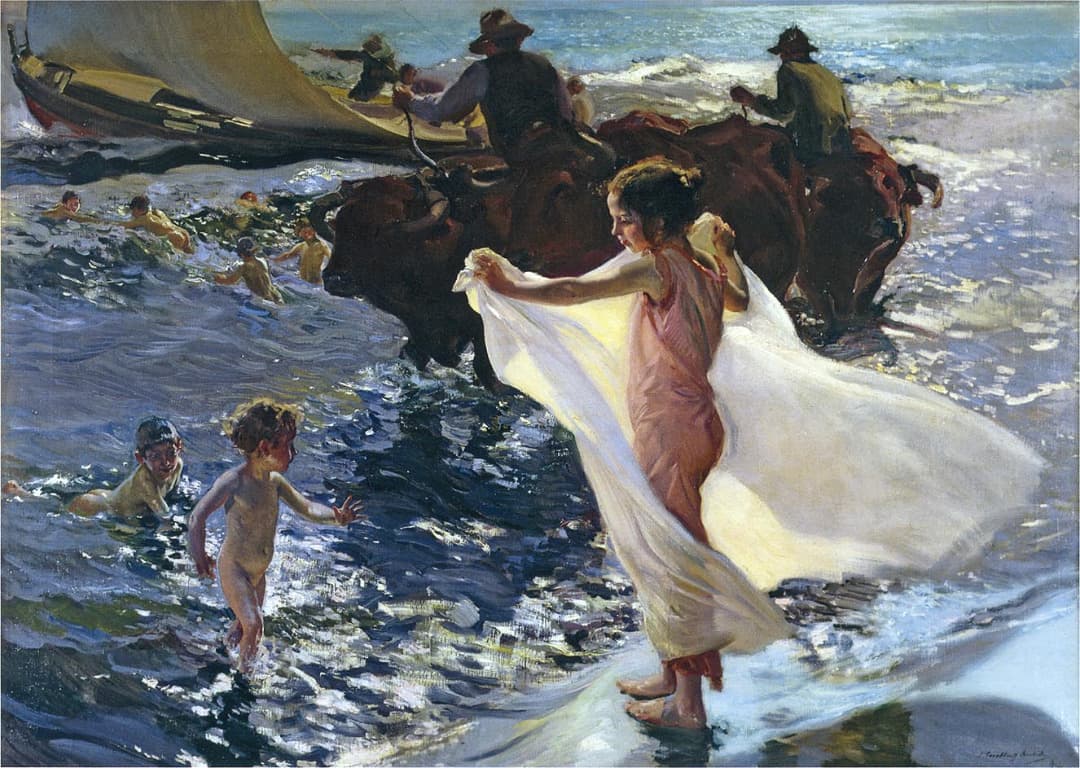
JOAQUÍN SOROLLA: “Bathing time”, 1904
Impressionism had hardly any presence in Spain. In fact, the painter who is generally considered its greatest representative in Spain -Joaquín Sorolla- was not a “pure” Impressionist, although his mature works are notably influenced by that movement. This painting sold for $6.2 million in 2003, a record price for a work by Sorolla.
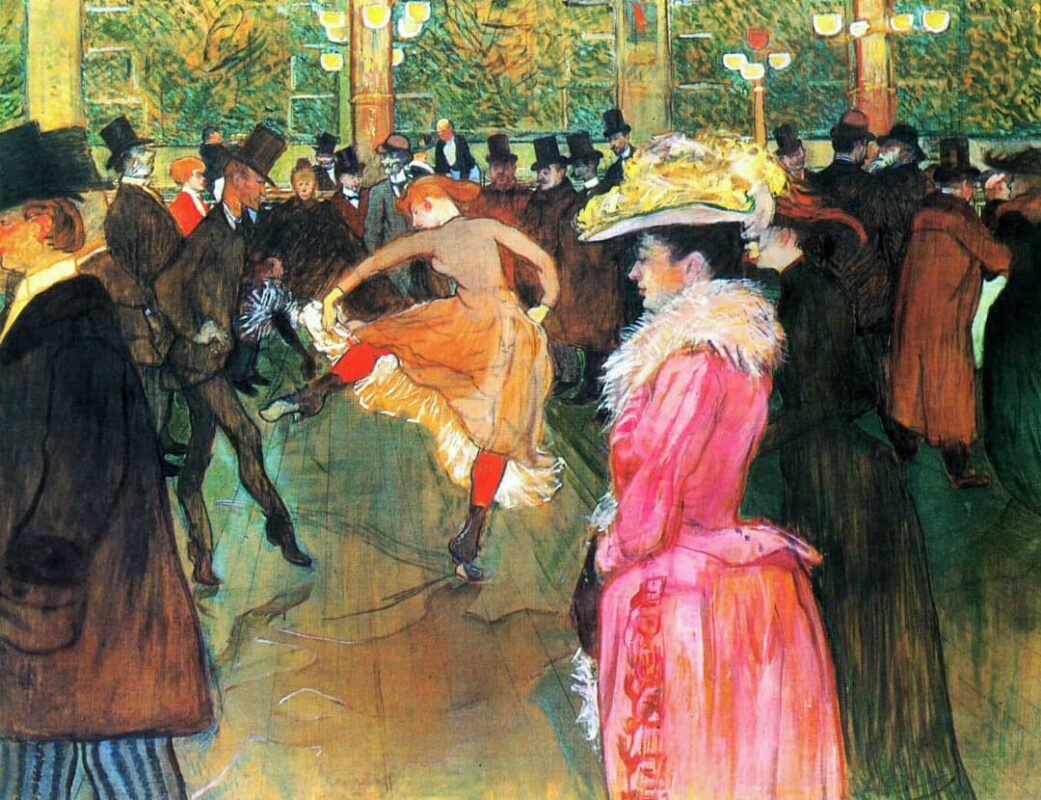
HENRI DE TOULOUSE-LAUTREC: “At the Moulin Rouge”, 1890
Born into an aristocratic family, and physically handicapped by an illness that affected his growth, Toulouse-Lautrec is known as the great chronicler of the 19th century Paris nightlife. This painting, which depicts one of the many balls that took place in one of the most famous cabarets in Paris, is one of his masterpieces, and along with Renoir’s “Moulin de la Galette” is one of the best representations of Parisian leisure of his time.
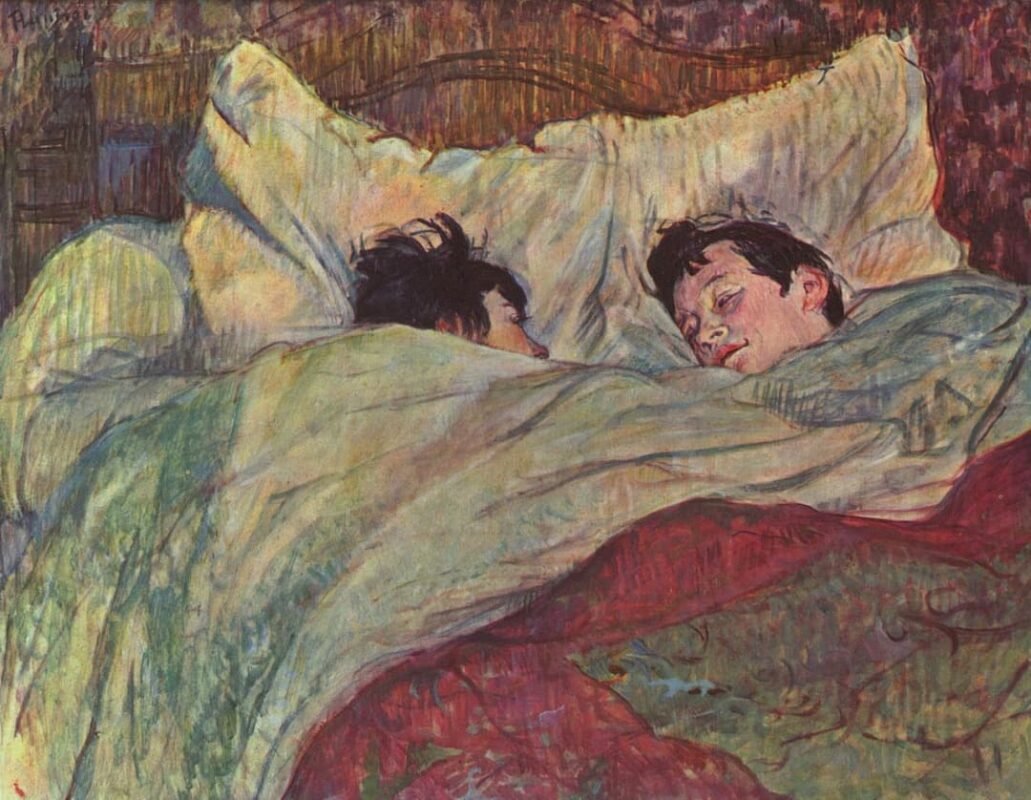
HENRI DE TOULOUSE-LAUTREC: “Dans le lit (In the bed)”, 1893
This is one (and probably the best) of several paintings depicting a couple in bed by Toulouse-Lautrec, which have been repeatedly described as “dispassionate” despite the intimacy of the scene. Although the composition seems very simple, the artist has employed a complicated perspective reinforced by the bright colors.
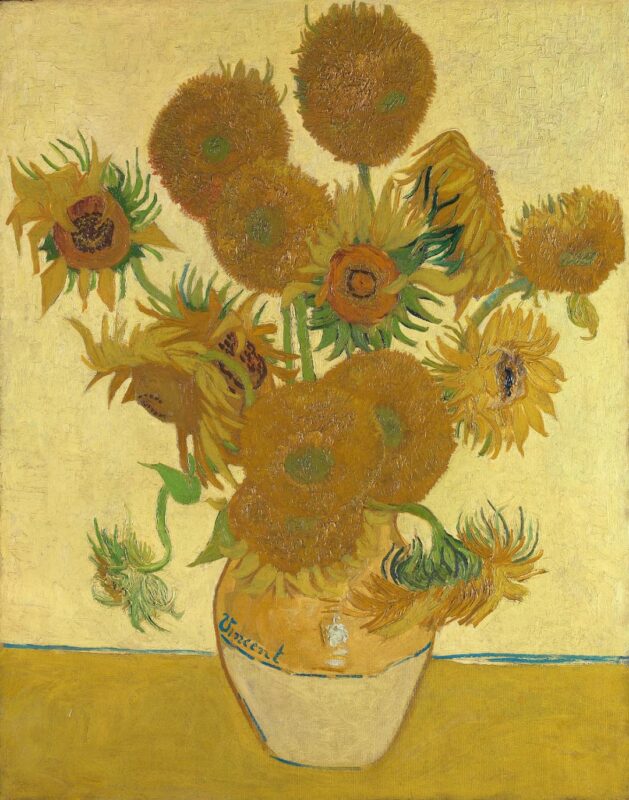
VINCENT VAN GOGH: “Los girasoles (vaso con 15 girasoles)”, 1888
Van Gogh’s “Sunflowers” is one of the most famous series of paintings in the world. Van Gogh himself felt particularly at ease while painting sunflowers (“the sunflower is my own,” he wrote in a letter to his brother Theo) and Gauguin’s only portrait of Van Gogh shows the Dutch artist painting precisely this subject. The example illustrated here is the first composition with fifteen sunflowers that van Gogh made, and certainly the one in which the color yellow (“the color of the sun”, as Van Gogh said) is most present in the composition. A painting from this series broke the auction record for a work of Art when it was sold to a Japanese investor for almost 40 million dollars in March 1987.
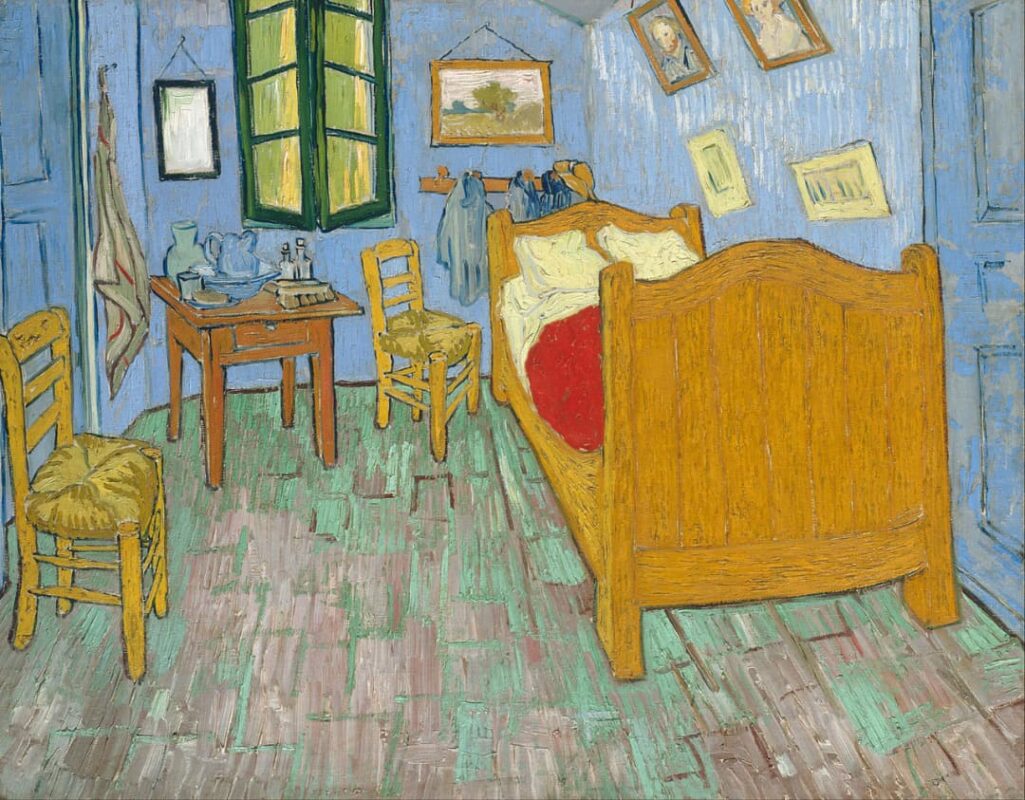
VINCENT VAN GOGH: “La chambre de Van Gogh à Arles (Bedroom in Arles)”, 1889
Van Gogh painted his bedroom in Arles in October 1888 (Amsterdam, Rijksmuseum Van Gogh), and a year later he painted two other copies while living in Saint-Rémy, the example shown here being the most elaborate of the three. “This time it is simply my bedroom” -Van Gogh wrote in a letter- “and the only thing that matters is the color, the simple thing gives the objects a greater style.”
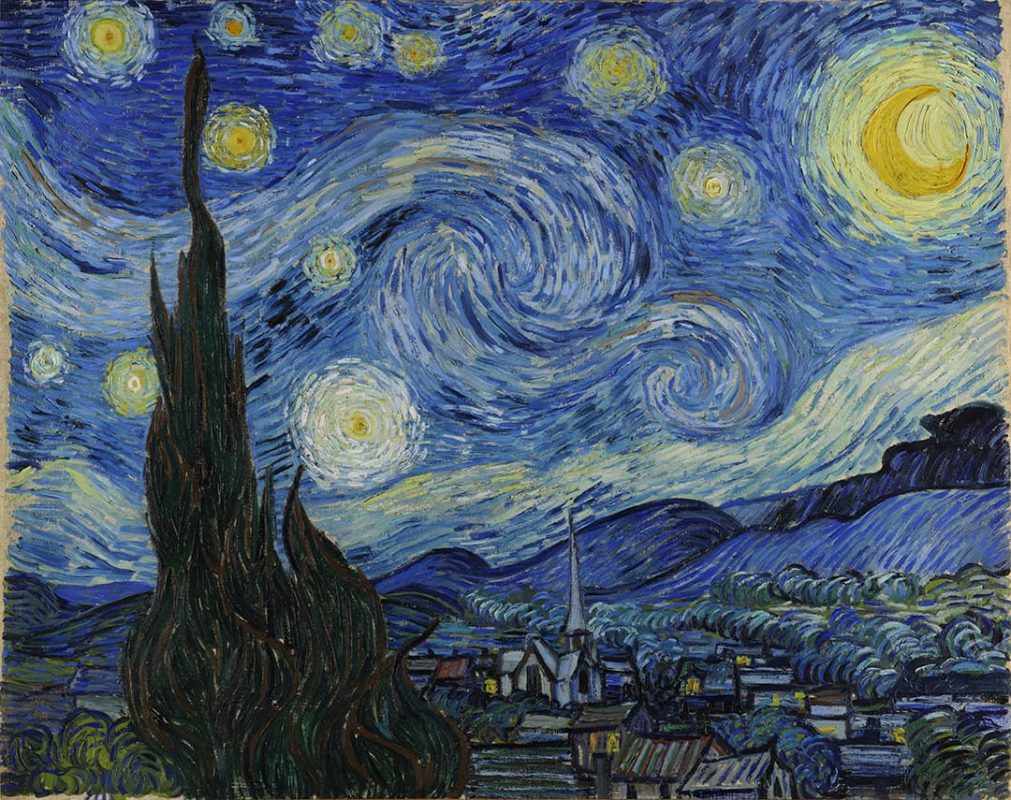
VINCENT VAN GOGH: “Starry Night”, 1889
One of van Gogh’s most brilliant and famous works, commonly associated to his increasing insanity, and that actually was the result of the artist’s interest for the astronomical investigations. In fact, in this painting we can observe either real and fantastic elements. On the first hand, a study made by the Griffith Park Observatory demonstrated that Van Gogh represented the Moon, Venus, and several stars in the exact position they occupied that clear night. On the other hand, the showy spiral that occupies great part of the work is clearly a fantastic element, which can be seen as the artist’s interpretation of the invisible astronomical phenomena that take place in the firmament, which were discovered in the 19th century.
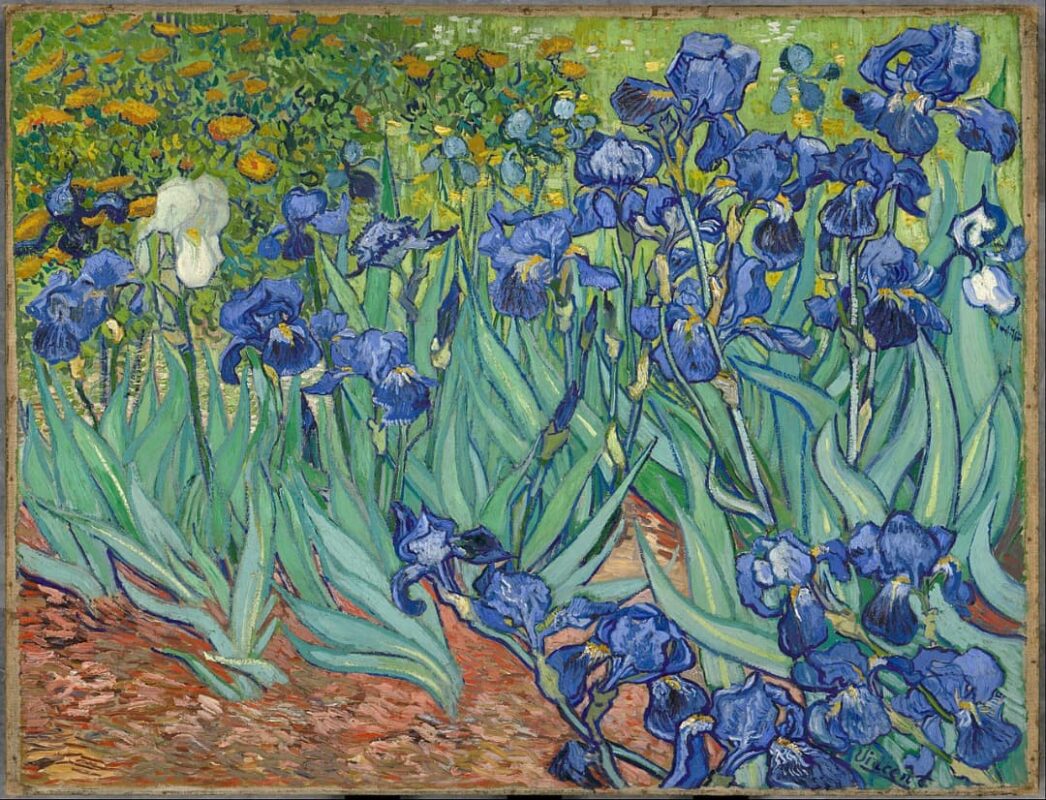
VINCENT VAN GOGH: “Irises”, 1889
Van Goh painted this famous canvas while he was living in the Saint-Rémy sanatorium, where he was allowed to paint “au plen air”. The whole canvas is an ode to the beauty of nature, and it is striking how the red ground seems to accompany the red flowers in the back, while the white lily is somehow echoed by a pale blue flower on the right. The painting was sold at Sotheby’s in 1989 for $53.9 million, then a record price for a work of Art.
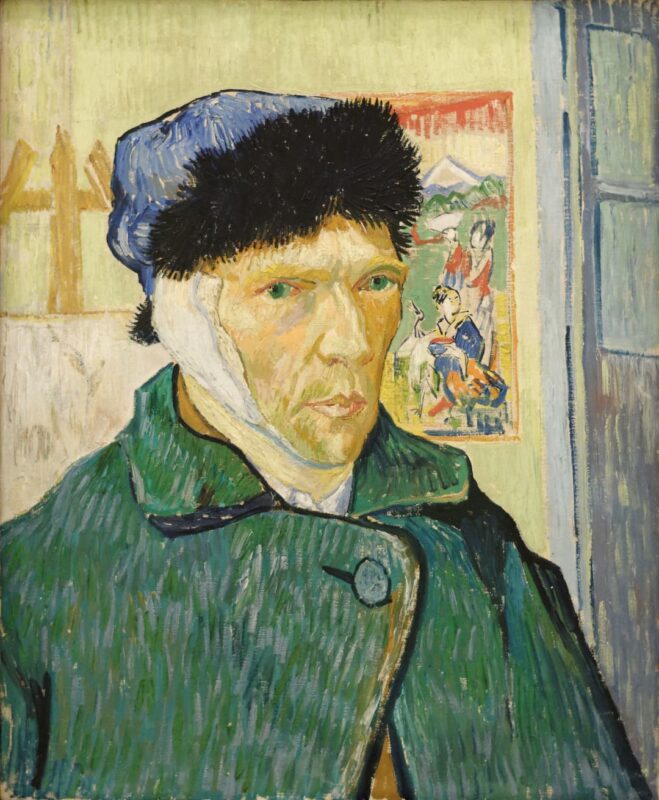
VINCENT VAN GOGH: “Self-Portrait with a Bandaged Ear”, 1889
This is one of the two self-portraits that Van Gogh painted after the ‘ear incident’ (the other one, previously in the collection of Leigh B. Block in Chicago, was later bought by the Niarchos family). The expression of the artist’s face is, paradoxically, calmer than in many other self-portraits by the artist; which can be interpreted as an effort of the painter to find in the painting his particular salvation. It is also remarkable the presence of a Japanese stamp in a self-portrait. In a letter to his brother Theo, Vincent affirmed that he envied the Japanese painters for “his style, as simple as breathing”.
Follow us on:

